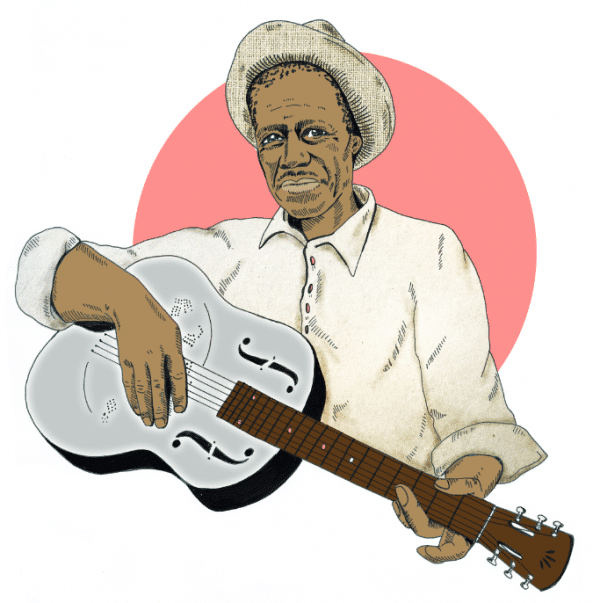
The legendary bluesmen of the Delta are often identified with a signature song, like Robert Johnson and “Cross Road Blues” or Charley Patton and “Pony Blues.” Son House is best known for his song “Death Letter,” which gained him widespread recognition and made him a legend several decades after his formative years in the Delta.
Videos by American Songwriter
“Death Letter,” also known as “Death Letter Blues,” was recorded in 1965 after House was rediscovered in New York, having abandoned the music business decades earlier. The song is often said to be patterned after his 1930 recording “My Black Mama, Part 2,” but the two don’t really have all that much in common besides the fact that they follow standard blues structures. The premise of the 12-bar blues “Death Letter” is that the narrator has received a letter telling him of the death of his lover, and that he needs to get himself to the location of the body before the funeral. When he arrives, he finds the body on a “cooling board,” a board with ice under it on which a corpse was laid during burial preparation, something that became obsolete with the widespread use of refrigeration. I grabbed up my suitcase, and took off down the road/When I got there she was layin’ on a coolin’ board.
An early four-verse version of the song appears on the album Son House Library of Congress Recordings 1941-1942. But the song really ended up in the spotlight when House became fully active again with the help of starmaking producer John Hammond and Canned Heat’s Alan Wilson, who basically taught him how to play like Son House again. “Death Letter” became his signature song, with the 1965 version containing 10 verses, though one of them isn’t much of a complete verse at all, but is simply Ah, hush, thought I heard her call my name/If it wasn’t so loud and so nice and plain/Ah, yeah/Mmmmmm.
In live performance, House sang different combinations of more than a dozen verses. One of the verses on the 1965 recording is one that he lifted almost verbatim from Robert Johnson’s song “Walkin’ Blues,” when he sang Got up this mornin’, feelin’ round for my shoes/You know, I must-a had them old walkin’ blues. It takes a little reading between the lines, but in the end the lyrics of “Death Letter” reveal that the narrator himself was the one who killed his woman, a theme not uncommon in the blues. This is not to be confused with Lead Belly’s 1935 two-part recording “Death Letter Blues,” which doesn’t bear any resemblance to House’s song.
House was a formative influence on both Robert Johnson and Muddy Waters, who not only emulated his slide playing to a degree, but copped his raw, emotional, totally non-commercial approach to music in general. He outlived both of them, performing into his 70s and inspiring younger artists like Jack White of Detroit, coincidentally the city where House died in 1988. Son House’s authenticity, and total indifference to the commercial trends of both the Al Jolson/Gene Autry era and the Vietnam war era, put him in the league of many other greats of the blues, most of whom had either peaked or died before House actually became well-known.
